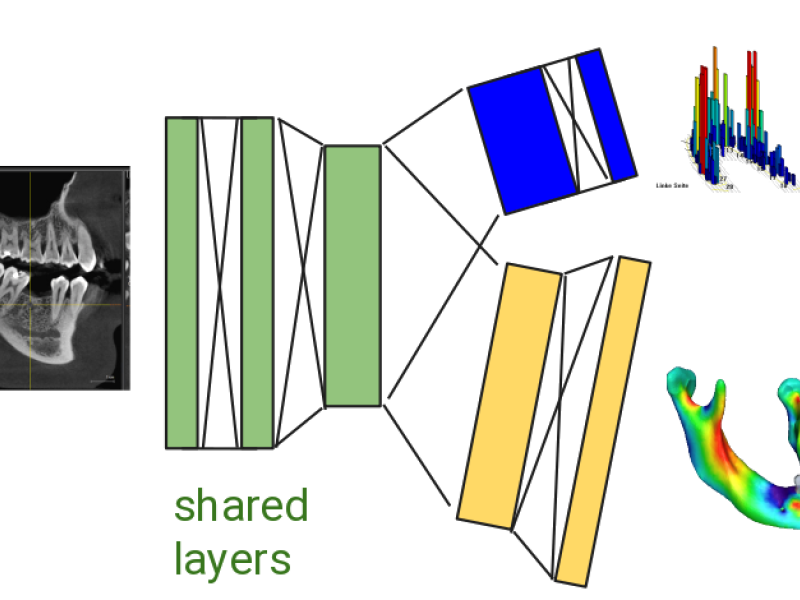Stability and longevity of tooth implants not only depend on the chosen implant type and its insertion but
also on individual bite forces and bone density. We estimate bite forces from dental CT by machine learning, integrating simulation and measurements in a physics-informed approach. We compare smooth bias approaches and auxiliary task learning.
Complications with bone-anchored dental implants (inflammation, loosening, chipping) up to
complete implant loss often occur due to unfavorable loading conditions within bone (at least 7.6% loss within 10 years). The objective of this project is therefore to increase the durability of bone-anchored dental implants, i.e. to minimize implant losses, by
improved therapy planning taking into account individual bite forces (i.e. loading conditions in implant and bone).
So far, implant configuration and positioning is based on geometrical aspects only, as obtained from DVT/CBCT imaging. Individual forces acting from the occlusal surfaces of the tooth crowns via the implant into the bone are important, but neglected. The long-term application goal is therefore to enable load-dependent configuration and positioning of implant-supported dentures as well as the design of new modular implants.
The measurement of bite forces is elaborate and usually not performed in clinical routine.
However, bite forces affect bone density due to remodeling. Hence,
physiological bite force distributions can be inferred from the shape of the jawbone and the bone density distribution
therein. The direct project goal is the estimation of bite forces from DVT data.
We will follow two strands of research:
(i) With a finite element simulation model computing stress distributions inside the bone from geometry, bone density, and bite force distribution, we will address the inverse problem of estimating bite forces from bone density alone based on a stationary remodeling assumption. This will of on one hand be affected by modeling errors, and on the other hand be too complex a procedure for routine application. 
Thus, we will consider
(ii) physics-informed learning for directly learning the desired bone density to bite force mapping. Available measured training data will be scarce, so we aim at integrating measured data with simulated training data. Both data enrichment and auxiliary task learning are considered.
